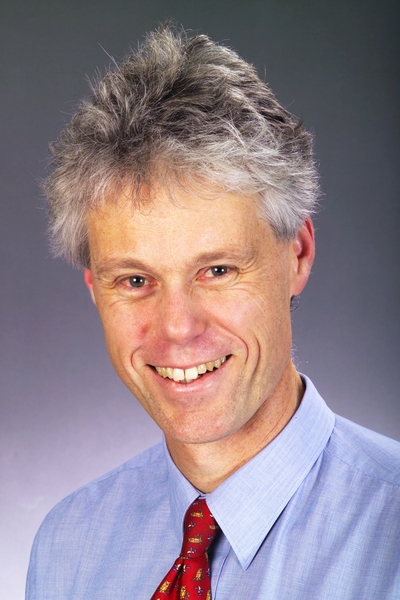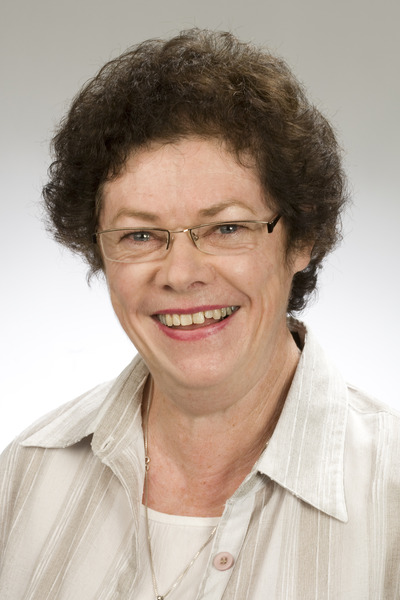Chronic inflammatory disease on trial

The results of clinical trial using cellular therapy in patients with Crohn’s disease were so encouraging the research was published before the trial had been completed.
It was about four years ago that Professor Geoff Forbes, a gastroenterologist at Royal Perth Hospital, had talks with Dr Marian Sturm about trialling a cellular therapy in patients with Crohn’s disease.
Sturm, Principal Scientist and Production Manager of Cell and Tissue Therapies at the Royal Perth Hospital, was involved in a study trialling the use of mesenchymal stromal cells (MSCs) in patients with steroid refractory graft versus host disease (GVHD).
The trial Sturm was involved in was producing positive results and she was aware that one of the symptoms in these patients was similar to that in patients with Crohn’s disease.
“The liver, skin and gut are commonly affected by this inflammatory condition,” said Sturm of GVHD. “Crohn’s disease is also an inflammatory disease characterised by chronic inflammation of the bowel.”
Forbes, who was well aware of the few treatment options available for end-stage Crohn’s patients, soon became the principal investigator of a clinical trial looking at the use of MSCs in patients with Crohn’s disease.
Realising benefits
GVHD is a serious complication that develops in patients who receive bone marrow transplants for cancers that affect blood, bone marrow and lymph nodes, such as lymphoma and leukemia.
Because it is an immune-mediated disorder - the newly transplanted bone marrow cells attack the transplant recipient’s tissue - it is usually treated by suppressing the immune system with medications such as steroids. But when this treatment fails, there are few treatment options available.
The initial phase 1 study that Sturm was involved with looked at the safety of MSCs in patients with steroid-refractory GVHD. The study showed that many study participants benefited from the treatment.
“Together with Professor Richard Herrmann, who is medical director of our facility, we started manufacturing MSCs in 2007 and treated our first patient with GVHD that year,” Sturm recalled.
Sturm is currently involved in a phase 2 trial in GVHD, which is comparing patients who receive standard of care (treatment with steroids) with those receiving standard of care plus MSCs.
“The MSC treatment in the phase 2 study in GVHD commences earlier in the disease - so patients are randomised as soon as they get GVHD, before they become refractory to steroids,” she added.
A chronic inflammatory condition
The experience Sturm’s group had in making MSCs and the success of the trial in patients with GVHD paved the way for Forbes to pursue a trial with Crohn’s patients.
Crohn’s disease most commonly affects the lower small intestine and the colon, but it can involve any part of the gastrointestinal tract from the mouth to anus. The inflammation extends from the mucosal lining through all the layers of the gut wall and causes pain, diarrhoea and a range of other debilitating symptoms.
“Getting these symptoms or the active disease under control is important, which is what we refer to as getting the disease into remission,” Forbes said. “Once the disease is in remission, we aim to maintain remission. Different treatments are often used to achieve these two aims.”
The activity of the disease is measured by the Crohn’s Disease Activity Index (CDAI), which takes into account factors such as number of bowel motions per day, abdominal pain and extraintestinal problems such as joint pain, skin rashes, eye problems and haemoglobin.
“If your CDAI value is less than 150 you are seen to be in clinical remission,” Forbes explained. “If it’s over 250 you have moderately active Crohn’s disease and if it is more than 350 you have severely active disease.”
The conventional treatment for Crohn’s disease is corticosteroids, such as prednisolone, to help induce disease remission.
Then, to maintain this remission, treatment with immunomodulators like azathioprine or methotrexate is used. If these drugs fail, patients can be given anti-tumour necrosis factor agents, such as infliximab and adalimumab, which are used for inducing and maintaining disease remission.
A trial in Crohn’s disease
With funding sourced through Therapeutics Innovation Australia and the US-based Broad Medical Research Program, Forbes got the trial underway in 2010, with colleagues in Perth, Adelaide, Melbourne and Sydney. A phase 2 study, the aim was to look at the efficacy and safety of using MSCs in patients with moderate to severely active Crohn’s disease who had failed treatment with all conventional medical therapies and otherwise needed surgery.
Patients were required to have a CDAI greater than 250 points to be eligible to join the study and disease activity was confirmed with an endoscopy. Patients were then given MSCs intravenously once a week for four weeks and study outcomes were evaluated at six weeks.
The primary endpoint for the study was clinical response, which was measured by a reduction in CDAI of 100 points or more. A number of secondary outcomes were measured, including clinical remission.
“For clinical remission to occur, the CDAI needs to have fallen to less than 150,” said Forbes “So if you start at 350 and drop to 100 you’ve had a clinical response and you’re in clinical remission.”
Interim data for 14 patients became available towards the end of 2012. Of the 14 patients, a clinical response was obtained in 12 - that is their CDAI fell by 100 points or more - and eight patients went into clinical remission with their CDAI falling to less than 150 points.
“This was quite extraordinary because we powered the study so that if we got to the first 10 patients and none had a clinical response we would then double the dose of the MSCs,” Forbes said. “And if we got to 20 patients and we had no response we were going to pull the study or if we got to 20 patients and we had one response we would continue through to 30 patients.”
“It is the clinical data that has been so encouraging,” Sturm concurred about the surprising efficacy of the MSC treatment in patients with refractory end-stage disease. The study is continuing and 19 patients have now joined the study. The plan is to recruit 30 patients.
Both researchers were keen to emphasise that the trial shows some evidence of efficacy in a small group of patients and that a multitude of questions remain to be answered.
“It remains to be seen whether MSCs are more effective in achieving disease remission, maintaining disease remission or for use in combination with current treatments to achieve better outcomes for patients,” said Forbes.
Universal donor cells
MSCs are found in the bone marrow and connective tissue of the body. They have immunosuppressive and immunoregulatory activity and migrate to sites of affected tissue to control local inflammation.
One of the fascinating characteristics of MSCs is that they are not recognised by the immune system. This makes them a universal donor cell - anybody’s MSCs can be given to anybody else without concerns about rejection.
“One of the issues that we had to get our heads around was the concept that we could administer MSCs to an individual without tissue matching,” recalled Forbes. “They are considered to be immunologically privileged but how they act and what they do is unclear.”
Based on work in animal models and in vitro studies, MSCs appear to facilitate the function of Treg cells.
Tregs are a type of immune cell that play a key role in modulating the immune system. It is thought that patients with Crohn’s disease have an undersupply of Tregs or poorly functioning Tregs and that MSCs may exert their action by upregulating Treg function in some way.
“It is something we are looking at and evaluating in our patient cohort in biopsy samples and blood samples that have been taken,” said Forbes. “We’ve got some clinical data so far, but we don’t have the laboratory data yet.”
The lab analysis will look at cytokines and cytokine gene expression to determine the effect of MSCs on key aspects of the immune system. This data will be important in increasing the understanding of how MSCs act and further understanding of the pathogenesis of Crohn’s disease.
In the lab, MSCs have the capacity to pass down differentiation pathways and form different cell types, such as adipocytes, osteoblasts and chondroblasts - fat-, bone- and cartilage-making cells. In contrast, in vivo they appear to exert their anti-inflammatory effect and then ‘disappear’. An unsatisfactory explanation, said Forbes, adding that this largely reflects the lack of understanding of exactly how MSCs function.
“It’s intriguing that 50 or 60 years on from the early use of drugs such as prednisolone, azathrioprine or mercaptopurine in Crohn’s disease, we still don’t understand precisely how these drugs work,” continued Forbes. “We just know they work. As our understanding of the immunological network in the gut improves so will our understanding about how potentially even these drugs we’ve used for 50 years might work.”
Making cells
Sturm is responsible for the laboratory manufacture of the cells and the regulatory mire associated with this. The licensed manufacturing facility that she runs, which is part of the Royal Perth Hospital, is the only one of its kind in the Australian public sector that makes MSCs.
“We now have a licence to manufacture MSCs for clinical trials,” said Sturm, explaining that an assortment of mandatory tests need to be conducted on the cells to be compliant with Therapeutic Goods Administration requirements.
Over time, Sturm’s team has perfected the techniques involved in isolating and growing MSCs. In their expert hands they “grow very easily”.
“We have a very rigid manufacturing protocol and we’ve had quite good clinical responses to our cells,” Sturm said. “We have certain techniques we use that we think may make our cells better than many other centres.”
Throughout the entire procedure, from getting the cells out of a marrow sample to expanding them and seeding new cultures to cryopreserving them for later use, the cells are tested for factors such as growth rate, phenotype and ability to differentiate into different tissue types. When they meet all the characterisation and manufacturing requirements they can be made available for infusion into patients.
“From about 10 mL of bone marrow from a donor we can derive about 80 doses of MSCs,” said Sturm explaining that bone marrow donors are relatives or friends of patients accrued to the trials. “The cells are packaged in aliquots of 50 or 100 million cells and we administer around 2 million cells per kilo patient weight at each infusion.”
Becoming routine
Sturm predicts that MSCs are going to be big - because of their ability to modulate the immune system and their potential to treat any of the numerous immune disorders. She sees the MSC infusion procedure becoming routine, like bone marrow transplants have become a regular procedure conducted in hospitals, although she is quick to point out that unlike bone marrow transplantation, chemotherapy drugs are not required prior to receiving MSCs.
“We have about six clinical trials underway here using MSCs, including some in organ transplantation,” said Sturm. “Basically, we have a freezer of cells that are available on request for clinical trials.”
Two studies that are about to start recruiting involve chronic obstructive pulmonary disease and cranial reconstruction.
“This is our first foray into tissue regeneration,” Sturm said of the trials that will be looking at bone generation. “We will be using allogeneic MSCs that are attached to a ceramic carrier and placed within a polymer scaffold to rebuild tissue. It’s very early days yet, but the studies are ready to go.”


Melatonin helps to prevent obesity, studies suggest
In an experiment carried out in rats, chronic administration of melatonin prevented obesity to a...
Personality influences the expression of our genes
An international research team has used artificial intelligence to show that our personalities...
Pig hearts kept alive outside the body for 24 hours
A major hurdle for human heart transplantation is the limited storage time of the donor heart...







